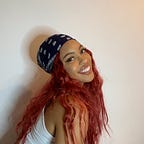From Canvas to Couture: When Art Meets Fashion
There has always been a direct connection between art and fashion.
Both are examples of artistic expression that capture the social and cultural norms of their respective eras. Artists and designers have worked together throughout the years to produce distinctive and iconic items that straddle the boundaries between art and fashion. Some of the most recognizable and significant works in the history of design have been the result of the merger of art and fashion.
For millennia, fashion and art have influenced one another. Fashion has always drawn inspiration from art, from the elaborate textiles of the Renaissance to the flamboyant designs of the 1960s. Conversely, fashion has frequently served as a source of inspiration for artists, who use attire and accessories as a medium for self-expression.
The paintings of Pablo Picasso are one of the earliest instances of this fusion of art and fashion. Picasso created costumes for the Ballets Russes in addition to being a painter. His efforts with the Russian ballet company produced some of the early 20th century’s most aesthetically spectacular shows. Picasso’s extravagantly bright and dramatic designs for the costumes of the ballets were as much a part of the artistic experience as the dance itself.
Salvador Dali was another artist who significantly influenced the fashion industry. In addition to creating a variety of garments and accessories in partnership with fashion designers like Elsa Schiaparelli, Dali is most renowned for his bizarre and dreamy paintings. One of his most well-known designs was a hat he made for Schiaparelli that was fashioned like a shoe. The hat was a joking allusion to Dali’s love of all things fantastical; it was made of suede and had a high heel.
In the 1960s, the art and fashion worlds collided once again with the rise of Pop Art. Pop artists such as Andy Warhol and Roy Lichtenstein created works that were both influenced by and commentaries on consumer culture. Their bright colors and bold graphics were perfect for the fashion world, and designers like Mary Quant and Pierre Cardin incorporated their designs into their collections.
The relationship between art and fashion is still strong today. While artists are becoming more intrigued by the potential of fashion, designers continue to find inspiration in the realm of art. Iris van Herpen, a Dutch fashion designer, is one of the trend’s more intriguing manifestations. With elaborate detailing and sculptural shapes that blur the distinction between fashion and sculpture, her works are sometimes referred to as “wearable art.”
The work of American artist Cindy Sherman is another illustration of how art and fashion may coexist. Sherman is renowned for her self-portraits in which she changes into a multitude of personas and frequently draws influence from the world of fashion. She co-created a collection for Comme des Garçons in 2019 with fashion designer Rei Kawakubo. The clothes in the collection have prints made from Sherman’s photos, further fusing the borders between fashion and art.
In recent years, there has been a growing interest in sustainable fashion, and artists are playing an increasingly important role in this movement. One example is the work of British artist Lucy Orta, whose designs explore the intersection of fashion and sustainability. Her collections are made from recycled materials and feature innovative designs that challenge our ideas about what clothing can be.
The blending of fashion and art has also had a profound effect on popular culture. Fashion has a significant role in the entertainment business, from music videos to red-carpet events. Fashion is a common medium for artists, singers, and performers to express their originality and creativity, and their decisions frequently have a big influence on the fashion industry.
One of the most exciting aspects of the intersection between art and fashion is the way in which it challenges our ideas about what constitutes art and what constitutes fashion. By blurring the lines between these two forms of creative expression, designers and artists are able to push the boundaries of what is possible and create truly innovative and groundbreaking works.
However, it’s important to remember that the fusion of art and fashion is not just about creating visually stunning pieces. It’s also about exploring the cultural and social values of our time and using fashion and art as a means of commenting on and critiquing these values. Whether it’s using sustainable materials to create fashion collections or using fashion as a means of exploring issues of gender and identity, the intersection of art and fashion has the power to create change and inspire new ways of thinking.
Overall, the fusion of art and fashion is a rich and complex area of creative expression that has had a significant impact on our culture and society. By continuing to explore the possibilities of this intersection, we can create truly innovative and transformative works that challenge our ideas about fashion, art, and the world around us. From canvas to couture, the fusion of art and fashion will continue to inspire and influence designers and artists for years to come.
